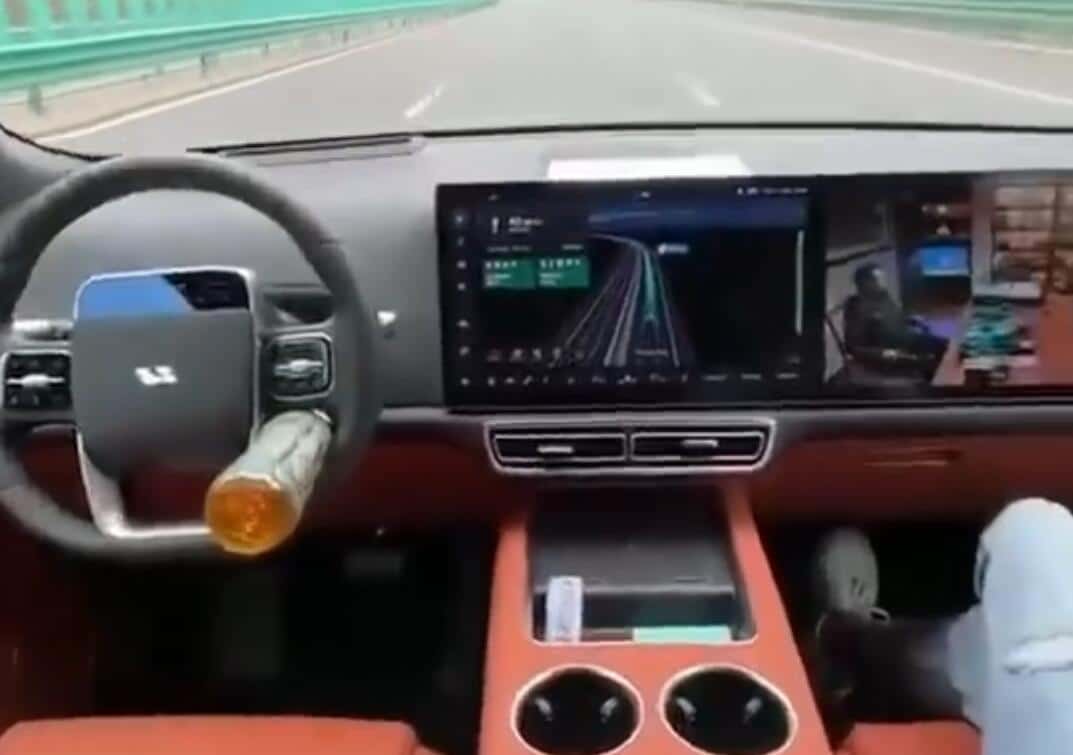The Li Auto vehicle was seen driving itself on a highway while the driver sat in the passenger seat watching a video.
Li Auto (NASDAQ: LI) has become a hot topic on Chinese social media after one of its vehicles was spotted driving itself on a highway while the driver sat in the passenger seat.
The video, which has been circulating widely online, shows a bottle of drink being placed on the steering wheel to allow the vehicle to detect weight, thereby avoiding the Driver Monitoring System (DMS).
The driver of the vehicle sat in the passenger seat to watch the video playing on a large screen in front of him while the vehicle was traveling on the highway.
Local media reported that the vehicle was traveling on the Sichuan section of the Chongqing-Chengdu highway at a speed of 120 km/h.
The driver's misuse of the vehicle's assisted driving system quickly sparked widespread discussion on social media.
Li Auto responded on Weibo on Thursday, saying the company was aware of the behavior, which is something that needs to be firmly discouraged.
"At this stage, the feature is still assisted driving, not autonomous driving," Li Auto said.
The driver is currently the person in charge of the vehicle and needs to be ready to take over at all times, Li Auto said, adding that such videos of dangerous driving are also not suitable for spreading.
Li Auto had previously entered the spotlight in early August 2021 for a similar case.
A video circulating online at the time showed a driver taking his hands off the steering wheel and laying flat, allowing the car to drive solely on the assisted driving feature.
The driver used a seatbelt buckle and a device that allowed the steering wheel to feel the weight of the car, thereby avoiding the DMS.
Li Auto said at the time that it took a firm stance against the behavior and asked all car owners to use the assisted driving system in the correct manner.
Like his local counterparts Nio (NYSE: NIO) and Xpeng (NYSE: XPEV), Li Auto is putting a lot of effort into driver assistance feature.
On April 18, Li Auto unveiled its latest generation of driver assistance systems, AD Max 3.0, on the first day of the Shanghai auto show, and said the software will be free for life. Li Auto's driver assistance systems include AD Max and AD Pro.
The AD Max 2.0 system uses Nvidia's Orin X chip and Hesai's LiDAR, while the AD Pro 2.0 uses Horizon Robotics' Journey 5 chip.
AD Max 3.0's all-scenario Navigation on ADAS (NOA) will cover more than 100 cities by the end of the year, Li Auto said at the time.
In the second half of the year, Li Auto will open up the commute NOA feature and make City NOA available in more cities, the company said at its inaugural Family Technology Day event on June 17.
For the commute NOA feature, vehicles can complete activation for simple routes in less than 1 week, and complete training for more complex routes in 2-3 weeks.
Li Auto estimated that commute NOA can cover more than 95 percent of commuting scenarios, making the vehicle an "exclusive elevator" for the owner.


